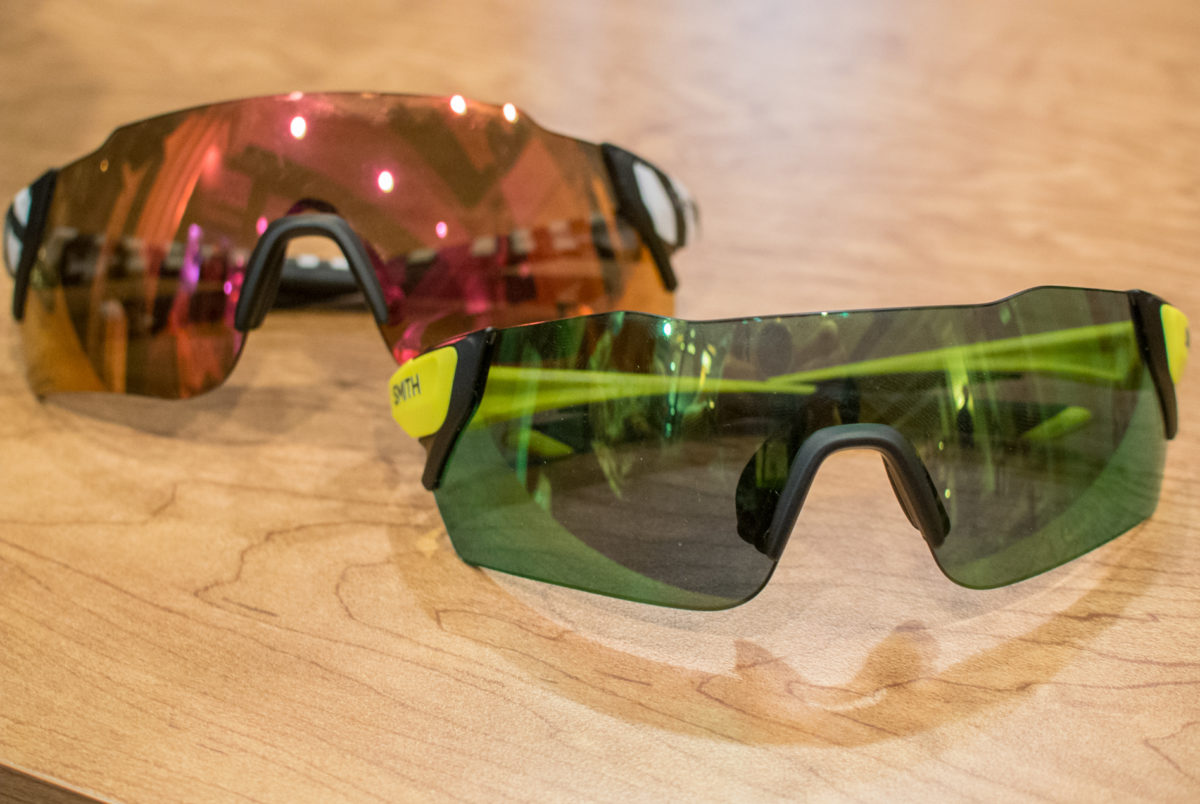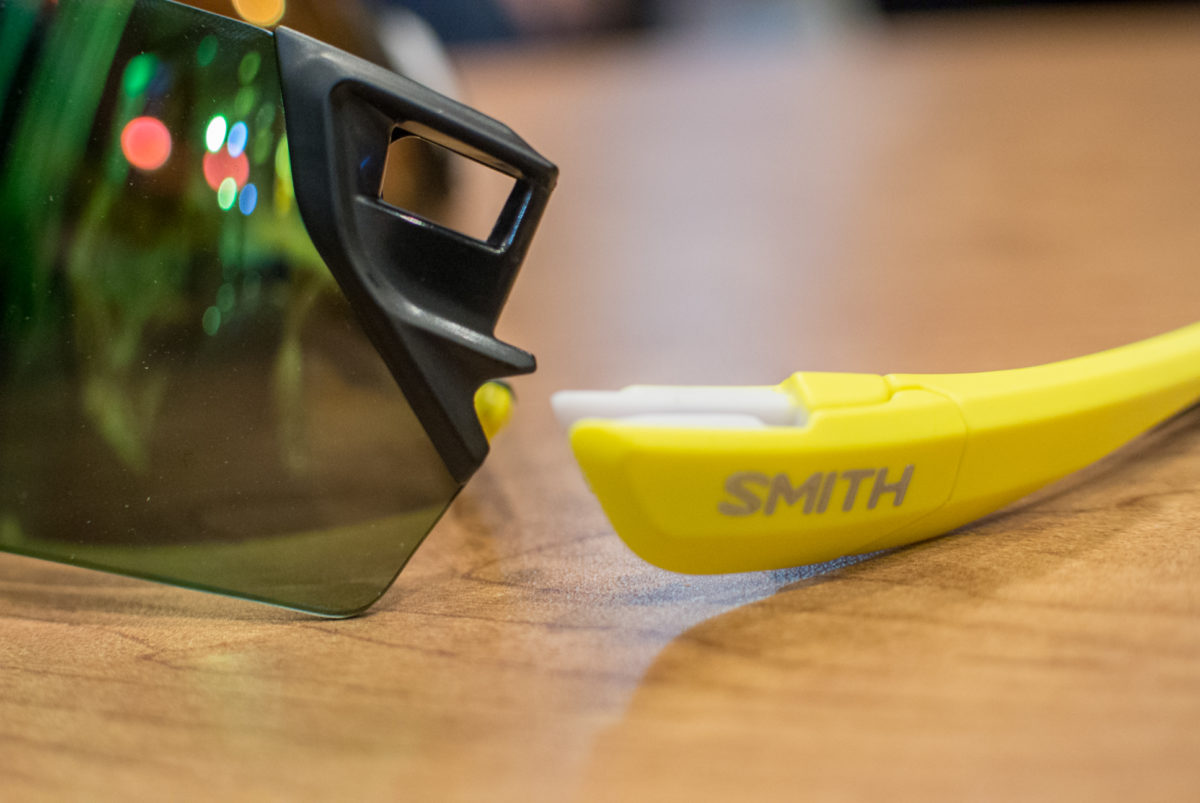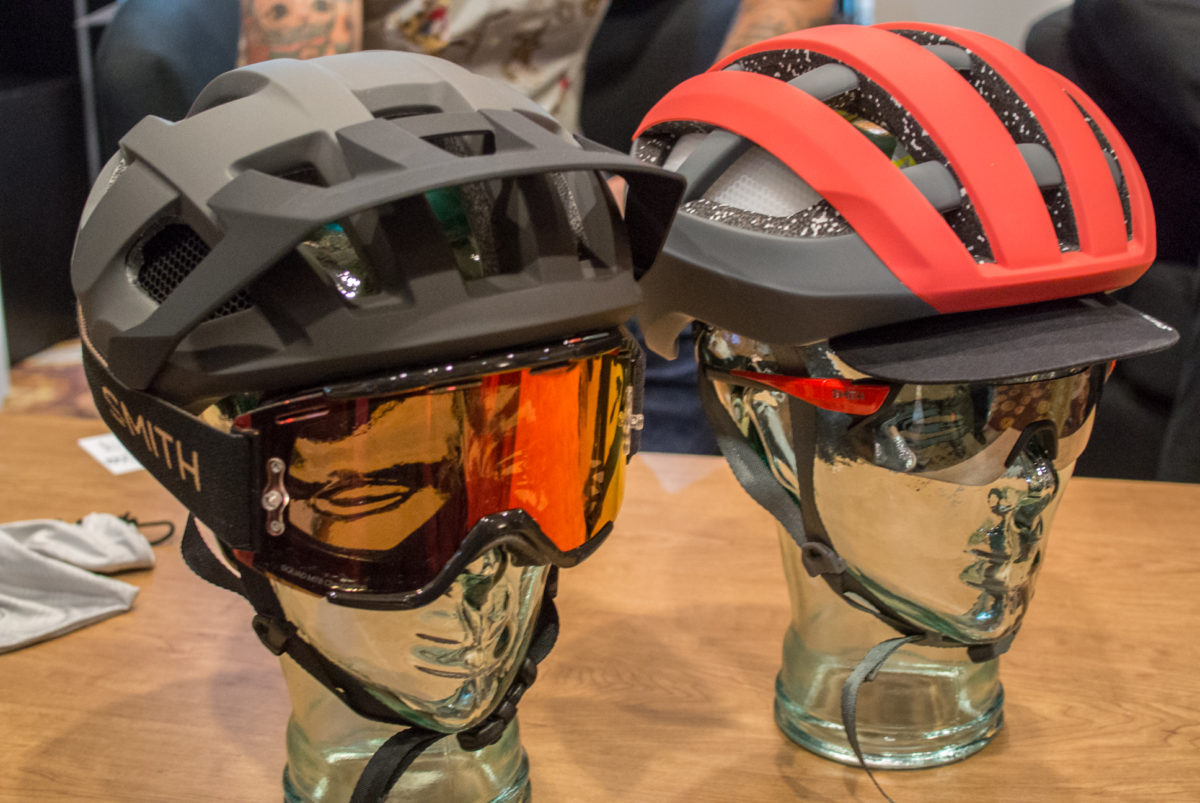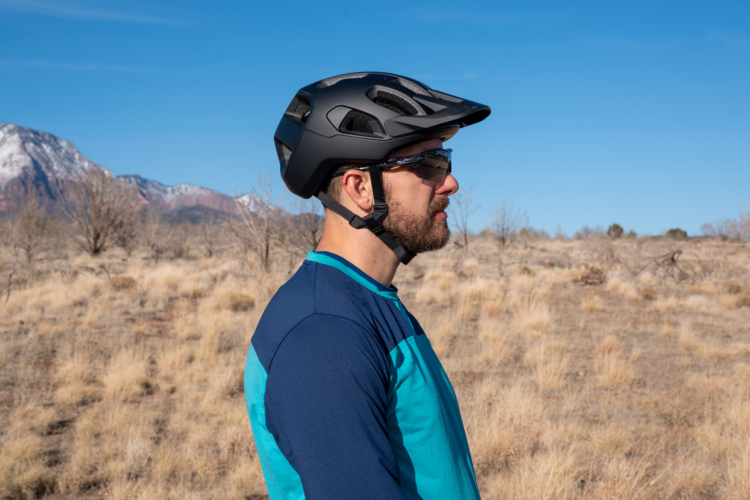
Smith’s PivLock interchangeable lens sunglasses have been around for what seems like forever. It’s a simple mechanism both in its concept and execution. The arms have a small nub that fits into a hole in the lens. Rotate the arms upward to remove them, and downward to reinstall them. To remove the nosepiece, simply squeeze the opposing sides together.
In practice, PivLock works quite well, but having owned several pairs myself, I can tell you there was room for improvement. For one, it takes a considerable amount of force to lock and unlock the arms. I often feel like I’m going to break that little nubbin on the arm — mind you I never have though. Another slight issue is the arms will eventually scratch the corners of the lenses from taking the arms on and off. Granted, the arms do end up covering the scratched portion.

Smith released what they’re calling MAG interchangeable lens technology to solve these (first-world) problems. Instead of the nub-into-a-hole-and-rotate PivLock system, the MAG arms use magnets to secure themselves to the lens. Squeeze a small clip near the temple to disengage the magnet and pull the arm away from the lens. To reinstall the arms, just slide them onto the lens. The video below shows how easy it is.
Smith offers the MAG technology on the Attack and Attack Max glasses. Pricing for both is $249 which includes two lenses. The older PivLock glasses will remain in Smith’s line, at least for now.
Smith Session Helmet

Also new from Smith is the Session helmet. It’s a half-shell trail helmet with extended rear coverage — essentially what all mountain bikers outside of XC racers are wearing these days. The Session slots in between Smith’s top offering — the Forefront — and the Rover. With the introduction of the Session, the Rover gets a price drop of $40, from $150 down to $110.

The Session uses Koroyd in select areas and comes with MIPS for $160. Look for it in stores next spring.




















0 Comments